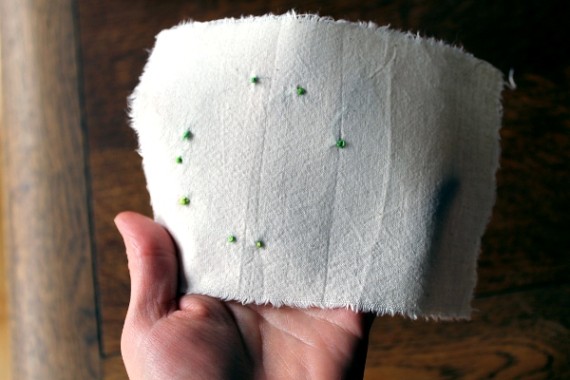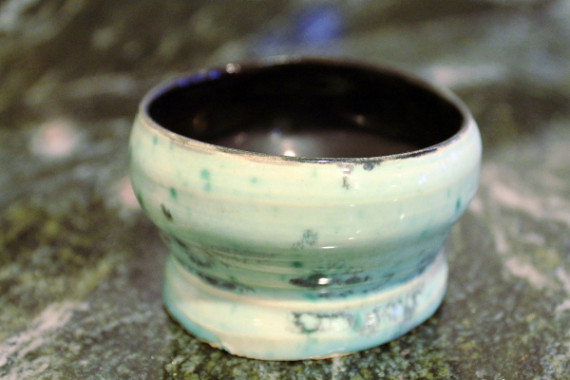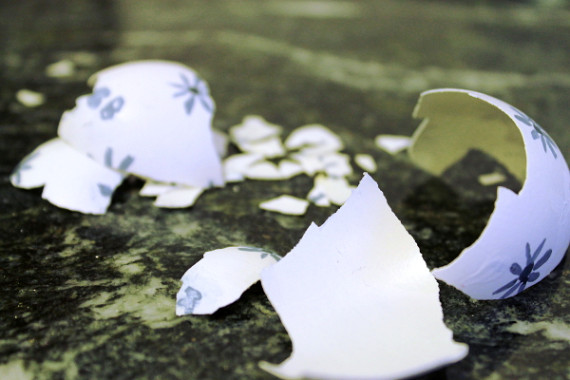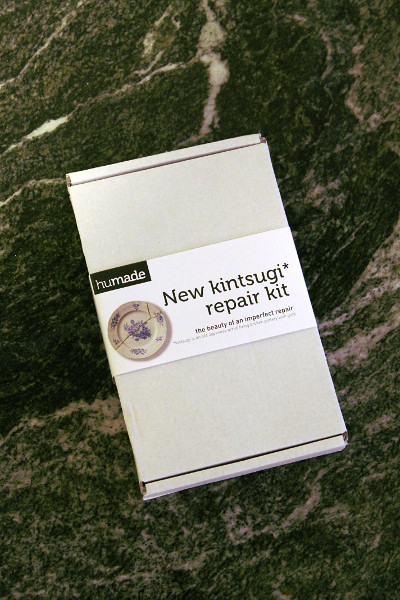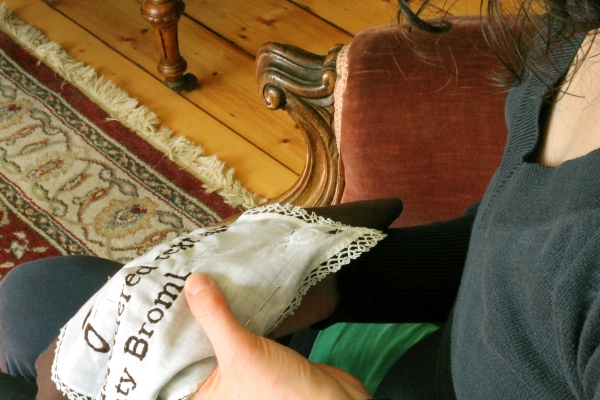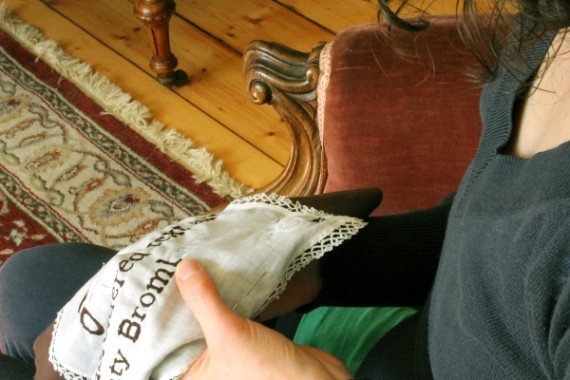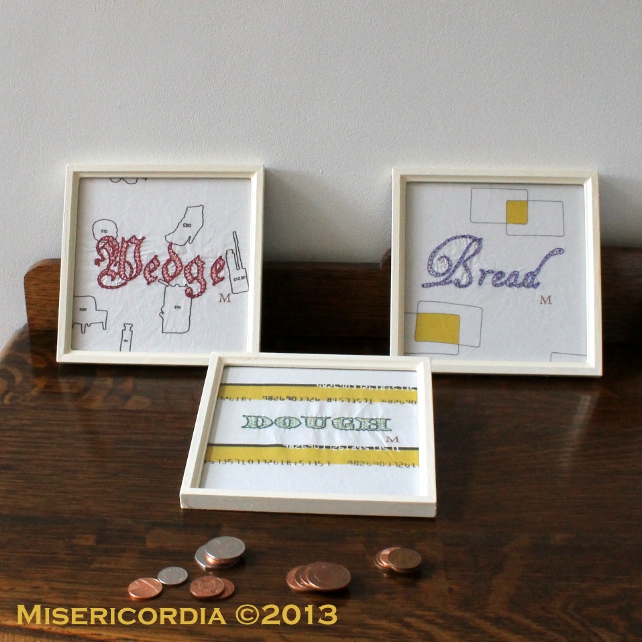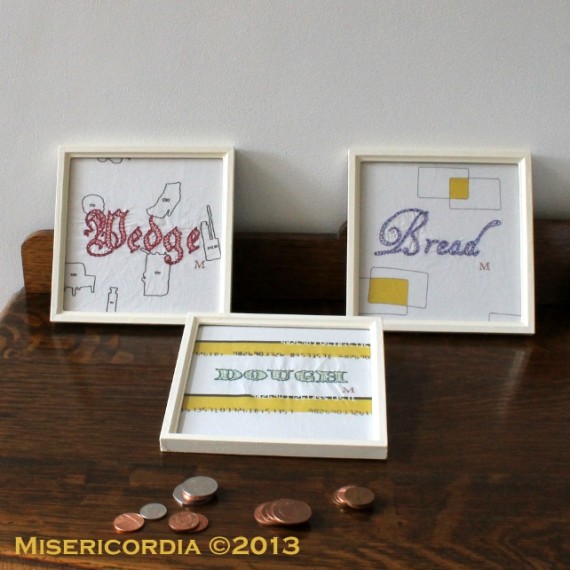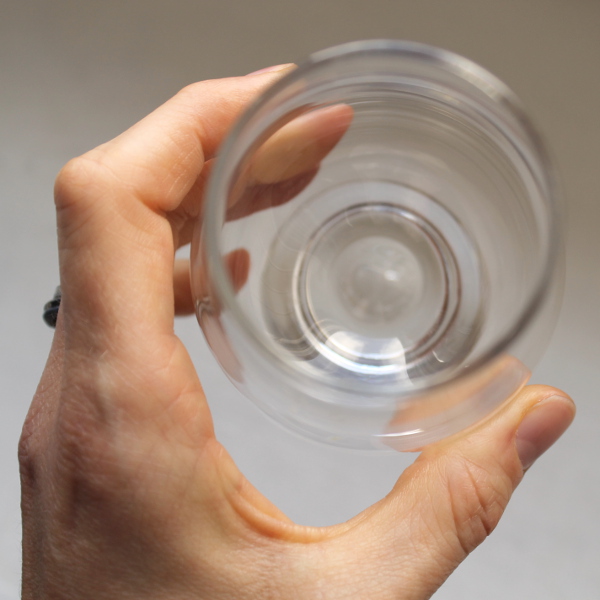Safety in Numbers
I thought I ought to inaugurate my return from holiday by helping someone else complete a project.
RT @RuthSinger: Make french knots! RT @lisa_solomon: I NEED HELP ! [[again]] – learn more on the blog: http://t.co/BjAUmxoAQN
— Katy Bromberg (@myMisericordia) April 11, 2014
I picked up a tweet while I was away which pointed me to this post on artist Lisa Solomon’s blog.
Her work explores ideas of repetition and collaborative effort, for instance this piece where participants contributed 1000 crocheted doilies.

1000 doilies :: 8000 pins :: 100 colors of thread :: me + approx 45 women all over the world crocheted the doilies :: me + 6 helpers installed the doilies :: 4 days :: 1 wall :: 1 art piece for “sen” at Fouladi Projects.
The piece that caught my eye looks at the Japanese (get the feeling there’s a bit of a theme here?) good luck amulet senninbari, a belt which was embroidered with 1000 knots. Each knot was meant to be stitched by a different woman. The symbolism seems to come both from the number 1000 and various other plays on words which derived from the addition of coins stitched into the belts as well as the text or images of tigers created by the knots. For much more information, see here.
I’ve submitted my contribution – you have until June to submit yours (allow time to post to the States).
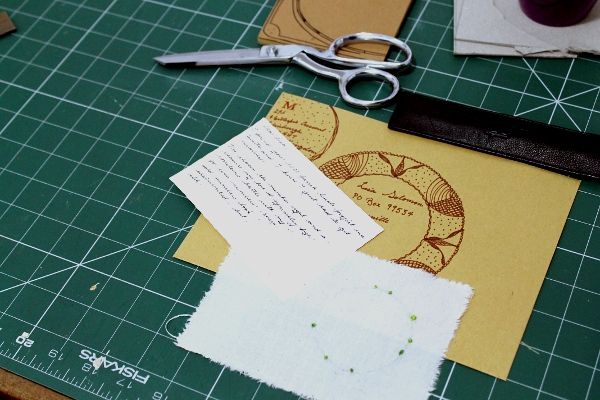
If the thought of french knots (you only have to do between one and ten) makes you break out in a cold sweat, you could contribute a drawing of a doily instead. There are details here and here.
I’ll keep you posted on the piece, it should be very interesting.

